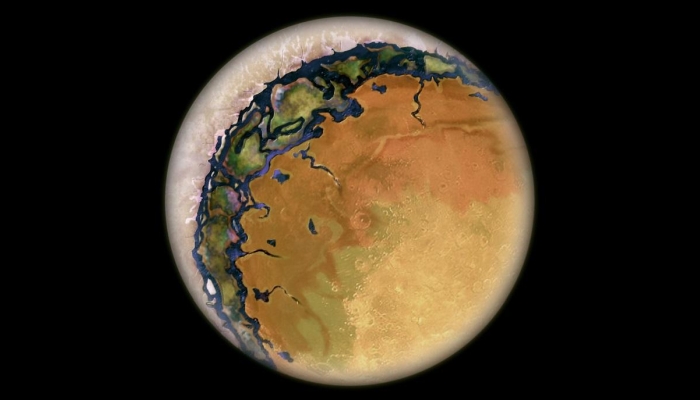You've heard of hot Jupiters. You've heard of mini-Neptunes. You've heard of super-Earths. But have you heard of Eyeball Planets? Yep - planetary scientists think there might be a type of exoplanet out there that looks disturbingly like a giant eyeball. Just sitting there. Staring.
But it's actually not as weird as it sounds - the appearance of these bodies has to do with tidal locking.
Tidal locking is when an orbiting body rotates at the same rate that it orbits. That means it always has one side facing the body it is orbiting, and the other side always facing away. The Moon, for instance, is tidally locked to Earth, that's why we never see its far side from here.
Earth isn't tidally locked to the Sun - that's why we have a day/night cycle - but we know there are exoplanets that are tidally locked to their stars. Which means one side is in perpetual day, and the other in perpetual night.
Each bathed in such different conditions, the day side might look very different from the night side. Depending how close the planet is to the star, one side could be dry, all the water burned away by stellar radiation; but the other side, in darkness, could be one huge ice cap wrapping around, terminating in a glacial ring. Something like this:
 (Beau.The Consortium/Rare Earth Wiki)
(Beau.The Consortium/Rare Earth Wiki)
According to a 2013 study in the journal Astrobiology, that ring could be habitable - in perpetual twilight, with water from the melting glaciers enabling a fertile region where vegetation could grow.
That's a hot eyeball. Then, according to astronomer Sean Raymond, there's the icy eyeball, farther from its star's heat. It still has a night-side ice cap. But the star side isn't dry, barren Earth; instead it's a liquid ocean, which again could be habitable, like Earth's teeming seas.
"Hot eyeball and icy eyeball planets are extreme cases, but any planet that is tidally locked to its star is likely to look very different on its day side and its night side," Raymond noted.
"Differences could come from clouds clustered in certain areas, from preferential melting of ice on the day side or freezing of ice on the night side, or from any number of other possible sources. The galaxy may be littered with wild varieties of eyeball planets!"
Well, it's a big place out there, and giant space eyeballs certainly aren't the strangest idea ever. Who knows what could be possible?
A version of this article was first published in January 2020.
"sound" - Google News
December 22, 2023 at 06:22PM
https://ift.tt/fOaE7DB
Eyeball Planets May Actually Exist, And They're as Creepy as They Sound - ScienceAlert
"sound" - Google News
https://ift.tt/ECerAW0
Shoes Man Tutorial
Pos News Update
Meme Update
Korean Entertainment News
Japan News Update

No comments:
Post a Comment